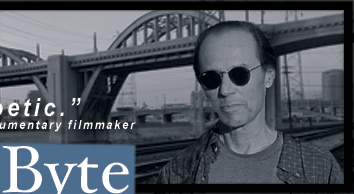
 |
The Movie Sets of Frank Lloyd Wright
Most intellectuals in the chattering class (as if there’s any other kind) revile Hollywood’s incessant worship of the mundane. But the American tradition of unjust boundless praise isn’t limited to entertainment nitwits. In that regard the learned class can be just as vacant. It was in the 1920s, that American Idol architect Frank Lloyd Wright built the Hollyhock House in Hollywood. Soon after, Wright began making textile block buildings — the most famous example is the Ennis House located near L.A.’s Greek Theater. Since the 1930s, the Ennis House has served as a popular shooting location for the entertainment world. This mini-Mayan temple residence supplied the exotics in scenes from motion pictures ranging from Blade Runner to Buffy the Vampire Slayer. The Ennis House, like so many of Frank Lloyd Wright’s buildings, also gained fame as a poorly executed structure. Just recently, the Ennis House Foundation announced its decision to sell its property to a private owner. “This decision,” they said, “stems primarily from the fact that the house needs more stewardship at this point than a small nonprofit can sustain.” In other words, Frank Lloyd Wright had designed another studio set that was mistaken for a work of architecture. Yet to claim that Frank Lloyd Wright wasn’t much of an architect amounts to heresy among highbrows. Wright is America’s preeminent architect, so they say. Which proves my point: The learned class can be just as vacant as anyone. The truth is Frank Lloyd Wright built eye candy by the basketload. But most of his confections are better left uninhabited. Many show signs of decay. At the nearby Hollyhock House you can find peeling stucco in addition to plastic draped over the roof to keep out the rain. Rain gutters clashed with Wright’s vision of style which he mostly ripped-off from the Japanese. Those long horizontal lines that are so much a part of the Wright ethic (you know, the ones we're told are “eloquent reflections of the American landscape and psyche”) seem to collect water which in turn leaks into the walls. Wright approached architecture like set design. His constructions weren’t made to last. And, like sets, they serve more as a trademark — a singular mental picture from one angle: Frank Lloyd Wright’s angle. Whether you’re living in or working in or visiting one of his structures, you're just a viewer not a participant. Like Hollywood, Wright wanted to be bigger than life. To do this his PR blitz made the claim that his buildings both conformed to, and enhanced nature. Yet in 1935, after his set pieces in Hollywood, Wright built Fallingwater, a house on top of a stream. Because of the falling water, Fallingwater is uncomfortably loud and damp. This poor excuse for a Pennsylvania home dominates the natural stream rather than conforms to it. Wright also was at odds with human nature. At Fallingwater and elsewhere, his ceilings are uncomfortably low. You might even call them oppressive. You see, Wright was a short man with a Napoleon complex. His buildings, I mean his movie sets, did his overcompensating for him. Oh yeah, I forgot to say, Fallingwater is in disrepair, too. Currently, the bill for keeping Fallingwater from falling down is $11.5 million. Are you beginning to see a pattern here? Later in 1936, Wright built a set in Racine Wisconsin, called the Johnson Wax Building. This was one of Wright’s indoor sets. It had no windows because Wright didn’t like the surrounding neighborhood. And, as an added bonus, if you were a new employee in the Johnson Wax Building, your fellow workers formed an office pool, taking bets on how long would it take you to loose your balance and fall out of your Wright-designed tripod chair. Nice touch, Frank. In 1959, Wright’s swirly Georgia O’Keeffe-ish Guggenheim Art Museum in New York was completed. This set requires visitors to view the exhibits as they make their way up an ascending spiral ramp — which means you can only see the art in one order, the order that was narrowed to one vision by set designer Frank Lloyd Wright. His cantilevers sag. His roofs leak. His interiors are too cold in the winter and too hot in the summer — so much so that at Wright’s Marin County Civic Center (completed in 1957), they had to evacuate the upper floors during a heat wave. The set would have cooked the crew. Granted, Wright was a flashy designer, but he was a set designer, not an architect. In film, you can strike the set. Unfortunately, Wright was expecting people in the real world to actually live and work in his pretty teardowns. We should no longer have to pay the price of this American Idol. It’s time we put an end to the constant fundraising that Frank Lloyd Wright’s structures require just to keep them standing. In the spirit of the new economy, let’s let the fuckers fall. That way the ruins of Frank Lloyd Wright can serve a much greater purpose as reminders to other architects. The message would be clear. We’d like things to last for awhile and compliment what we do. So long, Frank Lloyd Wright. With so many things of greater integrity to fund and embrace in our world, striking your sets is the only rational thing to do. Any Frank Lloyd Wright wannabees that are still around after the Ennis House is ground to dust by a Santa Ana, should seek employment in the entertainment industry and heed these word of advice. In the real world we need designers who can create living spaces that are about us not about you. — Nathan
Callahan © NathanCallahan.com / Nathan Callahan / all rights reserved |
Broadcasting Fridays at 8:50 am from KUCI 88.9 fm Orange County, California
|